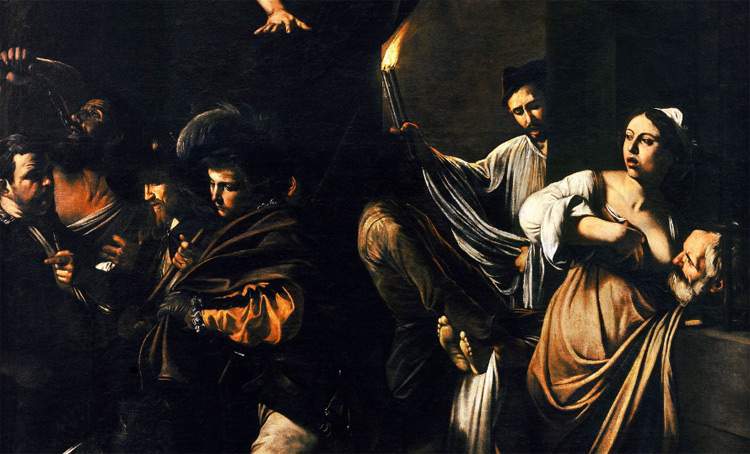The Seven Works of Mercy, the masterpiece by Caravaggio (Michelangelo Merisi, Milan, 1571 - Porto Ercole, 1610) kept at the Pio Monte della Misericordia in Naples, will not be transferred to the National Museum of Capodimonte, where they were to take center stage as part of the Caravaggio in Naples exhibition scheduled from April 12 to July 14. Despite the fact that there was an agreement between the lender, Pio Monte della Misericordia precisely, and the museum where the exhibition will take place, strong controversy had been raised in recent weeks about the appropriateness of moving the delicate painting just two kilometers from its home.
First came the voice of Nicola Spinosa, the former director of Capodimonte, who had criticized both the reasons for the exhibition (branded as a kind of marketing operation) and those for the move, which according to Spinosa was not possible even on the basis of the Statute of Pio Monte, which would prohibit its removal from its location. Spinosa had been answered by Alessandro Pasca di Magliano, superintendent of the Pio Monte, pointing out that the Statute prevents the sale and not the simple temporary relocation, that the work had already left the church in the past, and that Spinosa himself had requested its move for an exhibition when he was director of Capodimonte. Also opposed was Tomaso Montanari, who opposed the loan for reasons of expediency, since, according to the art historian, it makes more sense for the exhibition public to admire the work in its home, which is very close to the museum and more accessible since it is in the middle of the historic center of Naples (the Capodimonte Museum, on the other hand, is off-center).
The controversy then shifted to the institutional level as well, after the Ministry of Cultural Heritage sanctioned, in a measure signed by director general Gino Famiglietti, a definitive no to the loan because of the “risks to which the work would be exposed for the sole purpose of being transferred to a cultural institution that is located just over two kilometers from the church in which it is (well) preserved.” “Already in 1613,” the MiBAC note continues, "the governors of Pio Monte in consideration of the artistic perfection of the Caravaggesque masterpiece, established that it could not be alienated for nissuno price and that it should always be kept in the said church. On the same day (August 27, 1613) the governors authorized that the Count of Villamediana, who had requested it, could have a copy of the work made on the condition that said painting could not be removed from said altar. And a few years later, specifically on June 1, 1621, in order to avoid discrimination among applicants, they established a perpetual ban on making copies of the works of the church and in particular that of the altar havendo riguardo più presto al pubblico decoro che al privato commodo." The move would thus have subjected the Seven Works of Mercy to a risk deemed unnecessary: therefore, the Ministry suggested that the museum include the Pio Monte della Misericordia in the exhibition itinerary.
Speaking out against MiBAC’s verdict was the mayor of Naples, Luigi de Magistris, who spoke of a missed opportunity and a serious decision. “Cross vetoes prevailed,” the first citizen remarked during an intervention on Radio CRC, “the professionals of immobilism, those who enjoy culture only if they make it their own. But true culture is that which is accessible to everyone.” De Magistris then called on Neapolitans to “mobilize without rancor” to make it clear “that Naples is moving forward and that this decision by the ministry is yet another mistake.”
The minister of cultural heritage, Alberto Bonisoli, intervened sharply on the mayor’s words. “I didn’t know that the mayor was an expert in art and moving shovels,” he said. “There is a technical opinion, motivated by the director general. The shovel has important dimensions, the problem is not so much the transportation of two kilometers as the crow flies but it is really moving it from where it is placed.” Bonisoli therefore accepted the technical assessment and suggested that the exhibition be done in two locations: the idea, therefore, is not to move people to the exhibition, but to move them to the altarpiece. And he then urged the mayor to provide extraordinary public transportation rides to meet the needs of the exhibition.
However, despite the absence of the “star,” the exhibition will take place, said Capodimonte Director Sylvain Bellenger. The move, he explained in an interview with La Repubblica, was justified by the fact that in the exhibition the Seven Works of Mercy would be much closer to the public than they are in their location. But he also said that a solution would be thought of for the exhibition to make up for not moving.
Pictured: Caravaggio, The Seven Works of Mercy, detail (1606-1607; oil on canvas, 390 x 260 cm; Naples, Pio Monte della Misericordia)
 |
| Risky to move Caravaggio's Seven Works of Mercy to Capodimonte for exhibition. The work remains at Pio Monte |
Warning: the translation into English of the original Italian article was created using automatic tools. We undertake to review all articles, but we do not guarantee the total absence of inaccuracies in the translation due to the program. You can find the original by clicking on the ITA button. If you find any mistake,please contact us.